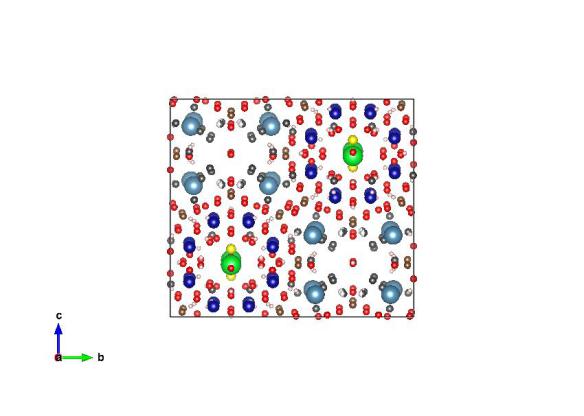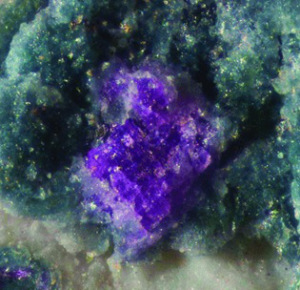Putnisite: Brand New and Completely Unique
What does it look like?

Image generated by the VESTA (Visualisation for Electronic and STructural analysis) software http://jp-minerals.org/vesta/en/
Green: Strontium, Light blue: Calcium, Dark blue: Chromium, Yellow: Sulphur, Brown: Carbon, Red: Oxygen, Dark grey: Water, Pink: Hydrogen.
What is it?
Putnisite is a brand new mineral that was recently discovered in Australia. As you can see in the structure above, there's a lot going on within the structure, leading to the lengthy chemical formula: SrCa4Cr3+8(CO3)8SO4(OH)16*25H2O. What makes Putnisite special (it is named after mineralogists Andrew and Christine Putnis) is that it is truly a one-of-a-kind mineral. The authors of a recent paper introducing putnisite call it "unique among minerals and synthetic compounds". The complex framework that makes up the crystal is not related to any other material that scientists currently know of. Even the elements that make up this material: strontium, calcium, chromium, sulphur, carbon, oxygen, and hydrogen, are an unusual combination.

Image from Elliot et al., Mineral. Mag. 78, 131-144.
Putnisite was found in the Polar Bear Peninsula in Western Australia. It appears as roughly ½ mm cubic crystals that are purple with pink streaks.
Where did this structure come from?
A detailed structure was recently reported in Mineralogical Magazine by lead author Peter Elliot from The University of Adelaide. Information can also be found in the American Mineralogist Crystal Structure Database.






